New Staff Members and Fellows

Elena Benvenuto
I have recently joined the Neutrino Secretariat as first point of contact for scientists from all over the world. My tasks range from assisting our members and associate members of personnel in their daily administrative procedures, preparing documentation, to coordinating meeting rooms reservations and travels, and assisting in budget follow up.
I feel truly honored to be part of such a dynamic group facilitating the administrative tasks and procedures of the global community of neutrino experts developing and prototyping the next generation of neutrino detectors. Before joining CERN, I held different HR and customer service positions for different international companies.
I feel truly honored to be part of such a dynamic group facilitating the administrative tasks and procedures of the global community of neutrino experts developing and prototyping the next generation of neutrino detectors. Before joining CERN, I held different HR and customer service positions for different international companies.
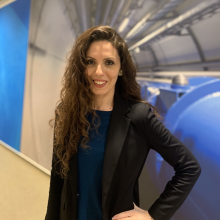
Valentina Maria Martina Cairo
I am an Experimental Particle Physicist joining CERN as LD Research Staff after working as a post-doctoral researcher at SLAC (California). I obtained my PhD in 2017 from the University of Calabria (Italy). I am pursuing my research programme in ATLAS focusing on the direct investigation of the Higgs self-coupling in Higgs pair production and I am co-convening the ATLAS Tracking group. I also have been involved in the construction of the new silicon-only ATLAS Inner Tracker for HL-LHC and I am starting a new project to investigate timing detector opportunities in ATLAS after Run 4. Beyond LHC, my research includes Higgs Physics and detector technologies at future electron-positron machines.
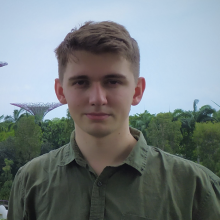
Miroslav Kubu
After completing my master’s degree in Applied Mathematics and Stochastic analysies, I spent my first yea working as a Data Scientist in a corporate environment. I am now joining CERN as a Junior Fellow at the DUNE experiment. I am generally interested in the application of statistical analysis and deep learning approaches in high energy physics as well as modern cloud technologies and quantum computing. My project explores the possibilities of the online analysis of the neutrino data from the photo dune experiment using Deep Learning approaches.
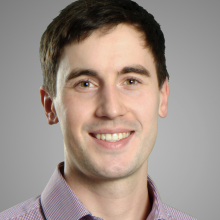
Peter Micke
In July, I have joined the BASE collaboration to study with my passionate colleagues the fundamental properties of the antiproton in the extremely well-controlled environment of a cryogenic Penning trap, with single particle sensitivity. These properties can be compared with those of the proton for precision tests of the fundamental CPT symmetry, to contribute to our understanding of the origin of the matter-antimatter asymmetry in the Universe. Before, I worked for the national metrology institute of Germany (PTB) and the Max-Planck-Institute for Nuclear Physics to set up with my former colleagues an optical atomic clock experiment based on highly charged ions. My vision is to apply quantum logic methods, which I have used there, to antiprotons to study them at even higher precision.
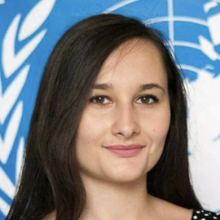
Laura-Iuliana Munteanu
I am a Senior Research Fellow in the EP-NU group. While at CERN, I will work on both current and future neutrino oscillation experiments - namely T2K and DUNE. I am particularly interested in the ND280 Upgrade project, which aims to upgrade the near detector of the T2K experiment. Intense R&D and commissioning activities towards this end are now taking place at CERN, and I am very happy to be here at this exciting time. The upgrade of the T2K near detector will allow neutrino physicists to measure neutrino oscillation parameters with greater precision, but will also give us a more detailed probe of neutrino interactions in matter. Studying the latter is essential groundwork for future oscillation experiments such as DUNE.
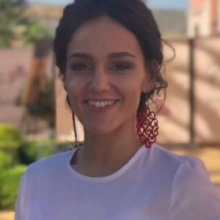
Maria Soledad Molina Gonzalez
I have joined CERN's EP Detector Technologies group as a fellow contributing to the activities of the EP R&D programme. I am an aerospace engineer with specialization in Air Navigation Systems, from University of Seville, with specific knowledge on modelling, carbon composite material and processes, electronics and radiation effects on electronic devices.
Previously, I worked as a research assistant in the Electronic Engineering Group of University of Seville on thermal design, data acquisition and electronics simulations. In the same group, I was responsible for the research on Structural Health Monitoring systems based on carbon composites structures instrumented with embedded optical sensors, design and assembly of the optoelectronic detection scheme for mechanical testing and manufacturing of a technology concept demonstrator. My activity at CERN will focus on the R&D of large carbon composite cryostats to support the operation of both liquid argon calorimeters and superconductive magnets for future experiments.
Previously, I worked as a research assistant in the Electronic Engineering Group of University of Seville on thermal design, data acquisition and electronics simulations. In the same group, I was responsible for the research on Structural Health Monitoring systems based on carbon composites structures instrumented with embedded optical sensors, design and assembly of the optoelectronic detection scheme for mechanical testing and manufacturing of a technology concept demonstrator. My activity at CERN will focus on the R&D of large carbon composite cryostats to support the operation of both liquid argon calorimeters and superconductive magnets for future experiments.
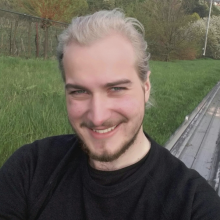
Peter Svihra
Peter is an experimental physicist focused on applications and development of silicon pixel detectors. He did his Ph.D. with the University of Manchester where he was working on building and characterising LHCb VELO Upgrade modules and working on simulations for the future VELO Upgrade. Apart from that, Peter worked on a Tpx3Cam project since 2017, providing capability of single photon detection with nanosecond resolution to various international collaborations with experiments ranging from molecular dynamics to quantum information technologies. He joined CERN as a fellow in 2021, focusing on pixel hybridisation techniques using ACF and testing newly developed pixel detectors.
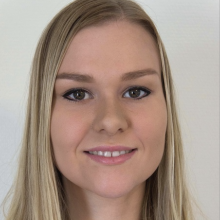
Anna Vaskuri
Anna Vaskuri received her doctorate in the Measurement Science and Technology from Aalto University, Finland in 2018. After her graduation, Vaskuri worked for 2.5 years as a Postdoctoral Associate at the National Institute of Standards and Technology, CO, USA developing the next generation high-accuracy absolute laser radiometers. In October 2021, Vaskuri’s curiosity towards superconductivity led her to join the ATLAS Magnet Group at CERN. Vaskuri is currently developing new high-temperature superconducting (HTS) cables for the future detector magnets. HTS cables permit higher operating temperatures and magnetic flux densities which have been out-of-reach with conventional magnets based on low-temperature superconductors
